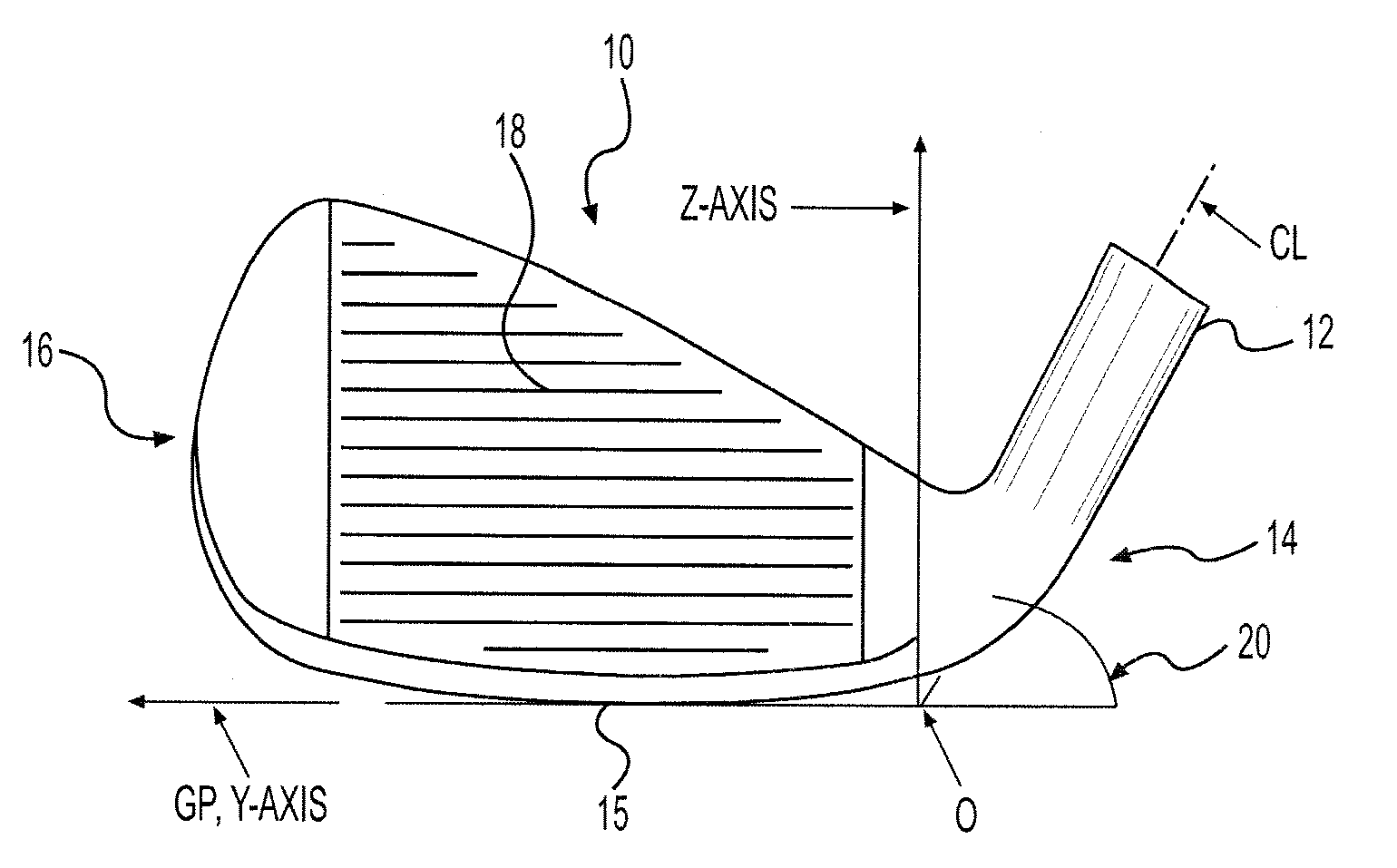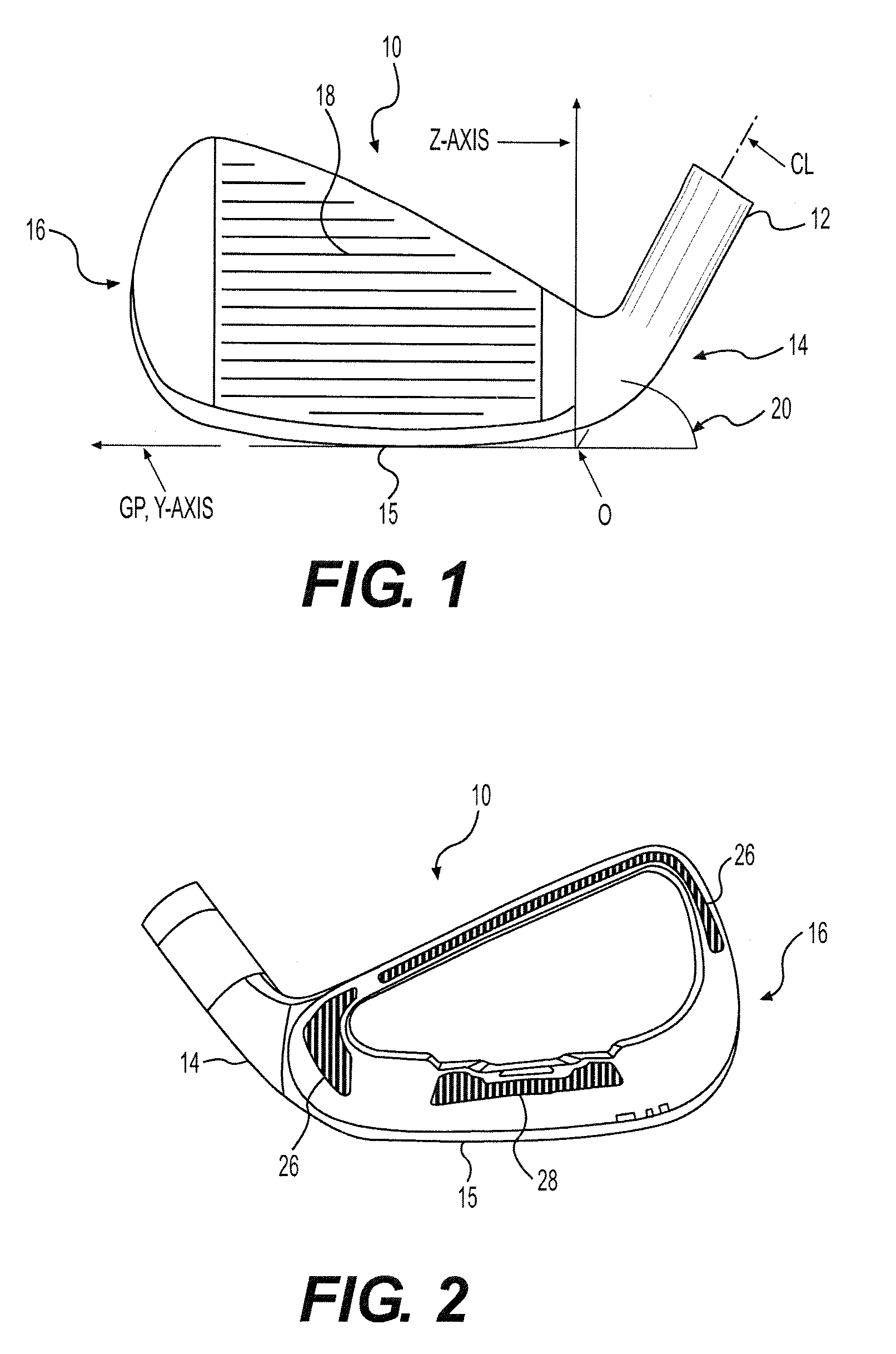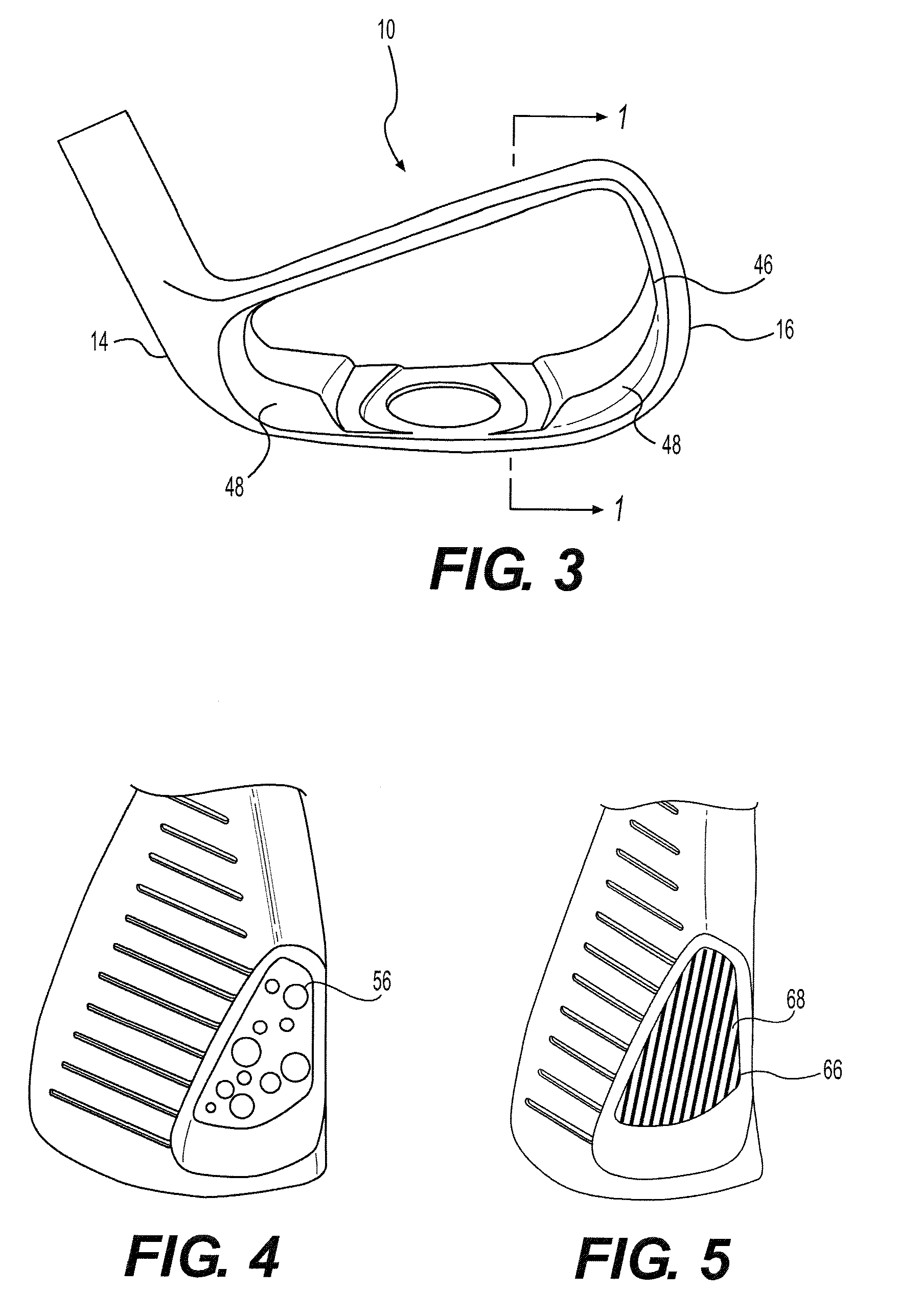Method of making golf clubs
a golf club and head technology, applied in the field of golf club head making, can solve the problems of golf shot with low initial trajectory, time-consuming and inefficient process, and inability to easily adjus
- Summary
- Abstract
- Description
- Claims
- Application Information
AI Technical Summary
Benefits of technology
Problems solved by technology
Method used
Image
Examples
Embodiment Construction
[0023]The present invention is directed to a process for manufacturing golf clubs using an additive process. For example, powdered metal sintering and metal deposition are suitable processes for use in the present invention. The process may be used to manufacture any type of golf club head including, but not limited to: irons, woods, putters, utility clubs, and wedges.
[0024]Powdered metal sintering systems involve a bed of metal powder that is sintered or melted layer by layer by a laser or electron beam to create metal parts. After the part has been created, the surrounding powder can be brushed away or shaken out of the part. In addition, a variety of metal powders can be melted in these systems. There are a number of commercially available systems suitable for use in the present invention. For example, the “MCP Realizer”, a selective laser melting system, which is the product of Mining and Chemical Products Limited of Germany, can create parts from any number of metals including ...
PUM
| Property | Measurement | Unit |
|---|---|---|
| density | aaaaa | aaaaa |
| density | aaaaa | aaaaa |
| porosity | aaaaa | aaaaa |
Abstract
Description
Claims
Application Information
 Login to View More
Login to View More - R&D
- Intellectual Property
- Life Sciences
- Materials
- Tech Scout
- Unparalleled Data Quality
- Higher Quality Content
- 60% Fewer Hallucinations
Browse by: Latest US Patents, China's latest patents, Technical Efficacy Thesaurus, Application Domain, Technology Topic, Popular Technical Reports.
© 2025 PatSnap. All rights reserved.Legal|Privacy policy|Modern Slavery Act Transparency Statement|Sitemap|About US| Contact US: help@patsnap.com



